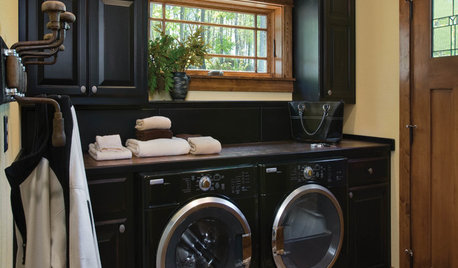removing the big ole nut on top of the fly wheel
firestix
12 years ago
Related Stories

HOUSEKEEPING20 Things You Might Be Forgetting to Spring-Clean
Clean these often-neglected areas and your house will look and feel better
Full Story
KITCHEN DESIGNNot a Big Cook? These Fun Kitchen Ideas Are for You
Would you rather sip wine and read than cook every night? Consider these kitchen amenities
Full Story
GREEN BUILDINGThe Big Freeze: Inventors Break New Ground to Keep Things Cool
Old-fashioned fridges can be energy guzzlers, but there are more eco-friendly ways of keeping food fresh, as these global innovations show
Full Story
LAUNDRY ROOMSTop 10 Trending Laundry Room Ideas on Houzz
Of all the laundry room photos uploaded to Houzz so far in 2016, these are the most popular. See why
Full Story
LIFETurn Off the Video Games and Turn On Your Kid's Creativity
Going nuts planning summer activities? Kids overdosing on screen time? It may be time to foster more self-directed play
Full Story
PRODUCT PICKSGuest Picks: Hot Air Balloons Help Decor Soar
Flying onto wallpaper, pillows, lighting and more, hot air balloons lift rooms up, up and away
Full Story
KITCHEN DESIGNKitchen Solution: The Open Island
No Room for a Big Island? Here's How to Create More Working Space Anyway
Full Story
DECORATING GUIDESMore Is More: The 10 Tenets of Maximalist Style
Ready to join the school of over-the-top design? Learn how to embrace excess in your interiors
Full Story
REMODELING GUIDESRoom of the Day: A Wine Country Entry Worth Lingering In
Artistic groupings and pillow-topped seats invite visitors to a winery show house to pause and reflect
Full Story
BEFORE AND AFTERSKitchen Rehab: Don’t Nix It, Fix It
A small makeover makes a big impact in a traditional kitchen in Atlanta with great bones
Full Story





Greg Goyeneche
mownie
Related Professionals
West Milford Landscape Architects & Landscape Designers · Windham Landscape Architects & Landscape Designers · Wrentham Landscape Architects & Landscape Designers · Lowell Landscape Architects & Landscape Designers · Aurora Landscape Contractors · Fairview Landscape Contractors · Long Branch Landscape Contractors · North Ridgeville Landscape Contractors · West Chester Landscape Contractors · Reisterstown Landscape Contractors · North Aurora Landscape Contractors · Coral Terrace Window Contractors · Crestwood Window Contractors · Milwaukee Window Contractors · Sacramento Window ContractorsfirestixOriginal Author
mownie
firestixOriginal Author
krnuttle
firestixOriginal Author
User
mownie
firestixOriginal Author
mownie
arceeguy
firestixOriginal Author
Marshal Kilburn
Marshal Kilburn
wprice23
HU-989590164